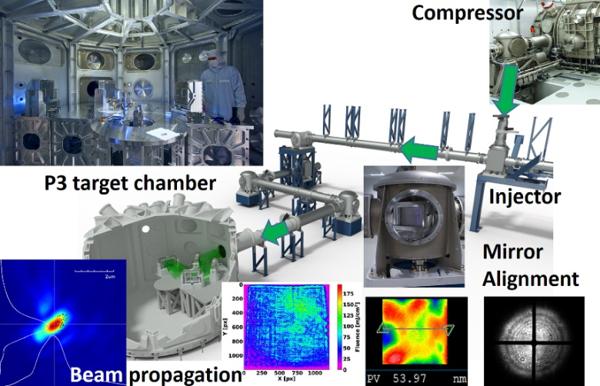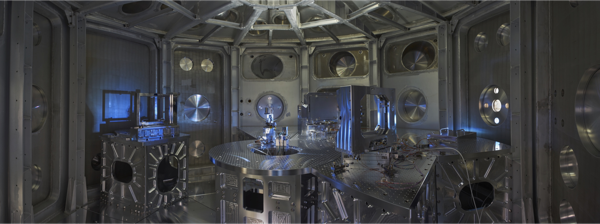
The topology of the beam transport system from the compressor, via the injector to the experimental chamber P3.
The Extreme Light Infrastructure in Prague, Czech Republic, ELI-Beamlines, engaged in the construction of a one-of-a-kind vacuum beam transport system for the propagation of fully compressed petawatt laser over very long distances.
In the article published on High Power Laser Science and Engineering report on the major engineering design effort, the construction, the installation as well as the early commissioning of the HAPLS (High-Repetition-Rate Advanced Petawatt Laser) beam transport system to the P3 experimental target chamber of the ELI-Beamlines laser facility. The system will be capable of guiding the 30 J, 30 fs, 10 Hz Petawatt laser entirely in vacuum and without a relay imaging system onto the target (S. Borneis, T. Laštovi?ka, M. Sokol, et al. Design, installation and commissioning of the ELI-Beamlines high-power, high-repetition rate HAPLS laser beam transport system to P3[J]. High Power Laser Science and Engineering, 2021, 9(2): 02000e30).
It is the world's first and with up to 100 m length, the longest distance high average power petawatt (PW) beam transport system ever built. It connects the HAPLS pulse compressor via the injector periscope with the five different target chambers located in four different experimental halls. The 4.5 m diameter P3 target chamber of the plasma physics group in the experimental hall E3 is the largest target chamber of the facility and was connected first to the BT system. The most demanding engineering challenges are the required high vibration stability mirror support structures, the high pointing stability opto-mechanics (100 nrad RMS mechanical) as well as the required levels for chemical (≤ 100 ng/cm2) and particle cleanliness (≤ level 100, i.e. ≤ 2 particles/cm2) of the vacuum vessels to preserve the high laser damage threshold (0.8 J/cm2 at 30 fs) of the dielectrically coated high-power mirrors. These mirrors have an outstanding reflected wavefront error, which amounts to only 60 nm peak-to-valley at 45° use angle after subtracting power and astigmatism (achievable via adequate target parabola alignment).
In addition, a novel l concept for the alignment of the beam transport with a 417 nm 1" diameter pilot laser beam is described, which allows a fast and precise alignment of the entire system. The measured near and far field agree well with our beam propagation model predictions. The experimental chamber is directly bolted to the massive base plate of the building and is extremely stable. With two cryogenic pumps running (each at 10000 liter/second) the radial pointing RMS on target of the HAPLS low-power beam is of the order of 2.5 μrad. The contribution of the beam transport system and experimental chamber to the pointing instability is almost negligible.

The inside of the P3 experimental chamber.
A dedicated team of engineers, designers and scientists worked together for several years from the original concept to the final commissioning of the beam transport system. The project generated a considerable amount of highly specialized know-how which puts ELI-Beamlines in a unique position for short-pulse laser transport systems.
The upcoming work will be a similar beam transport system for the multi-PW laser system L4 at ELI-Beamlines. Due to the very large-size optical elements employed, the corresponding vacuum system will be based on pipes having 1000 mm diameter. Such a system will be extremely challenging as far as stability and pointing is concerned and if successful will be even more unique as the previous one built.


